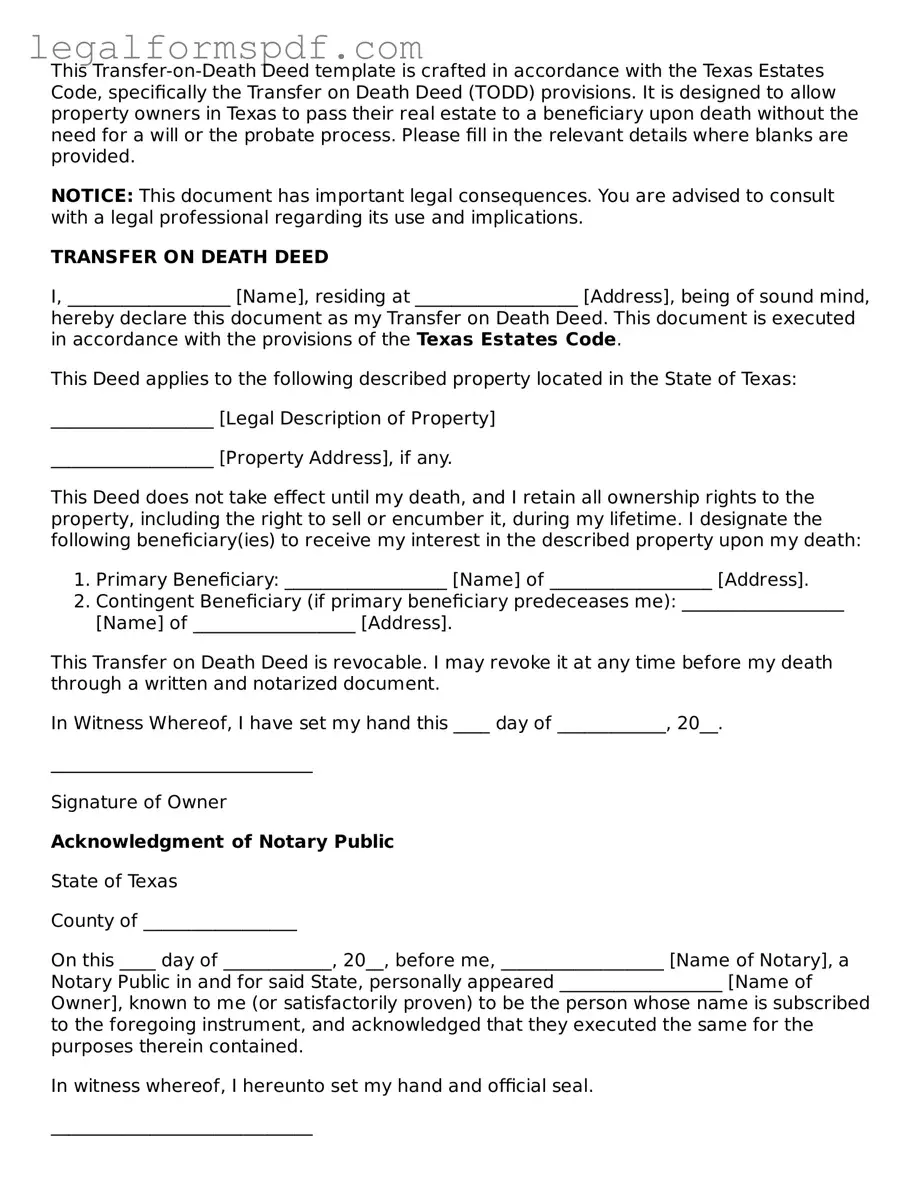This Transfer-on-Death Deed template is crafted in accordance with the Texas Estates Code, specifically the Transfer on Death Deed (TODD) provisions. It is designed to allow property owners in Texas to pass their real estate to a beneficiary upon death without the need for a will or the probate process. Please fill in the relevant details where blanks are provided.
NOTICE: This document has important legal consequences. You are advised to consult with a legal professional regarding its use and implications.
TRANSFER ON DEATH DEED
I, __________________ [Name], residing at __________________ [Address], being of sound mind, hereby declare this document as my Transfer on Death Deed. This document is executed in accordance with the provisions of the Texas Estates Code.
This Deed applies to the following described property located in the State of Texas:
__________________ [Legal Description of Property]
__________________ [Property Address], if any.
This Deed does not take effect until my death, and I retain all ownership rights to the property, including the right to sell or encumber it, during my lifetime. I designate the following beneficiary(ies) to receive my interest in the described property upon my death:
- Primary Beneficiary: __________________ [Name] of __________________ [Address].
- Contingent Beneficiary (if primary beneficiary predeceases me): __________________ [Name] of __________________ [Address].
This Transfer on Death Deed is revocable. I may revoke it at any time before my death through a written and notarized document.
In Witness Whereof, I have set my hand this ____ day of ____________, 20__.
_____________________________
Signature of Owner
Acknowledgment of Notary Public
State of Texas
County of _________________
On this ____ day of ____________, 20__, before me, __________________ [Name of Notary], a Notary Public in and for said State, personally appeared __________________ [Name of Owner], known to me (or satisfactorily proven) to be the person whose name is subscribed to the foregoing instrument, and acknowledged that they executed the same for the purposes therein contained.
In witness whereof, I hereunto set my hand and official seal.
_____________________________
Signature of Notary Public
My Commission Expires: _________________
